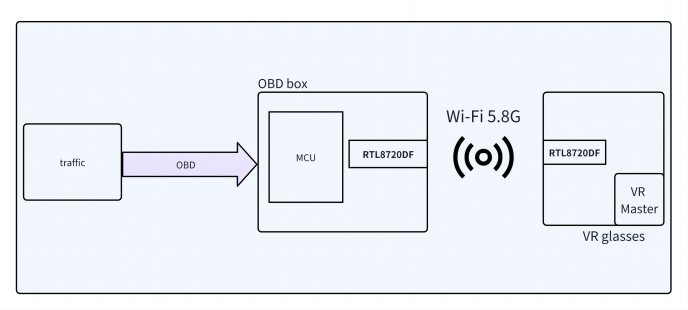RTL8720DF 5.8G Data Transmission Application Solution¶
1 Industry Requirements¶
- Automotive head-mounted VR glasses accurately synchronize VR content with the physical movement of the car by acquiring data from the car's sensors to prevent vertigo.
- Acquiring data from automotive sensors: position data, motion data, vehicle status, environmental data, etc.
- The data from the car sensors need to be transmitted to the VR glasses by wired or wireless means.
2 Market Existing Solutions¶
- Wired: Wired transmission of vehicle sensor data restricts the flexibility and convenience of moving the head-mounted VR glasses.
- Wireless: Wireless Wifi 2.4G transmission method, high latency, packet loss, unstable connection and other shortcomings.
3 RTL8720DF 5.8G Transparent Transmission Solution¶
Based on RTL8720DF 5.8G wireless transmitting application program has the following characteristics:
- low latency: TCP/UDP data transmission <15ms
- stable connection: TCP/IP-based error detection and retransmission mechanism
- Low packet loss rate: based on 5.8G high speed transmission to ensure data stability.
4 Advantages¶
This solution is based on RTL8720DF which is a dual-band Wi-Fi (2.4G+5G) and BLE5.0 Soc chip. With ultra-low power consumption, complete encryption strategy and rich peripheral resources, it has low latency and high transmission speed compared with traditional 2.4G communication, which can fully meet the requirements of real-time data processing and low-latency transmission of VR glasses. 
- MCU module collects vehicle data through sensors. 2.
- Collected vehicle data, through the serial port AT command control RTL8720DF to establish TCP/UDP connection, through the 5.8G transmission, the data will be transmitted to the VR glasses.
- VR glasses receive the transmitted vehicle data and precisely adjust the position to fit the vehicle movement.